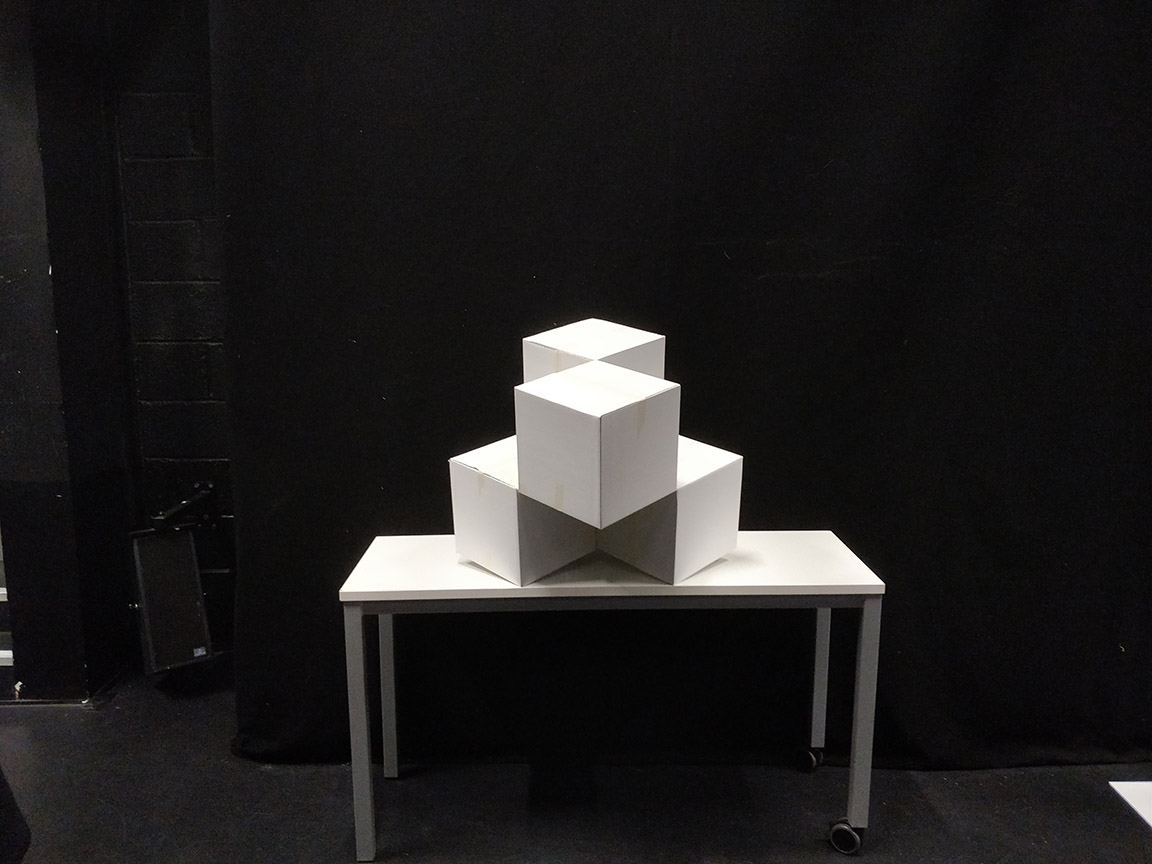Xanh
produced by: Tammu Do
Introduction
Xanh in Vietnamese means blue. Another word
that sounds exactly like xanh also means
birth. This projection mapping was a
process-based piece that focused on these
two elements of blue + birth: Xanh.
Concept and background research
As a designer who has had experience with vfx and animation work, perhaps the biggest challenge was deciding on what visuals and/or theme to play with. Initially I had different goals of organic designs, but after some deliberation of my skills and time, I decided a processed based work flow would be most interesting to me, and would allow me flexibility as a compromise from having too many initial ideas.
Some of my early fine art practice involved lots of blue ink, and I still have an affinity for the sacred color. Also, the line stroke and the weight was a defining quality of my previous work, and I wanted to focus on lines for most of this project. I decided on a color palette, and mapped out the timeline for my project.
Much of my research was looking at James Turrell's skyspaces and light installations. Much of his work sucessfully "apprehends" and activates light and perception. There's no animation or movement in the structures themselves, however they support the view, and this synthesized framing triggers the work and places the viewer in direct consumption of the work with no external distractions. When looking at his pieces, I see design elements of stability, focus, and sometimes a strange sensation of slow vibration. I wanted my piece to have a similar effect. Obviously, i did not want the exact same aesthetic, but this element of framing the surface plane for the viewer, and "activating" pressure points of perception was intriguing to me.
Again, my process was process based, however I went through many drawings throughout the process, in order to make cheap mistakes/mockups before jumping to the next scene. The result ended up with lines building up to complexity and color.
Technical
We used Maya 3D to model our shape first in order to test the potential lighting and shadow effects of our object. We then built it out of cardboard. We wanted an object that would be interesting in the round but still simple enough for a fully realized dynamic exploration of the shape.
I used Openframeworks for the code, coding each scene separately, and then knitting them together as FBOs. Planning for distinct scenes that would build upon each other, much of my process involved revisiting old scenes in order to try to make a cohesive design pattern. Throughout the whole process, color was my constant challenge, since I had vowed at the beginning to attach myself to blue, therefore introducing the yellow gold color was a bit unnerving for me, since I was worried this would be a stark transition for the audience, especially if my design values were meditation and activation. Nonetheless, I decided this color change was needed since it would hopefully fullfill the role of that slow and quiet vibration element I spoke of before in Turrell's work.
Future development
I hope to develop on the ideas of activation and "apprehension" of lines and light, and instead of cubes as a surface, maybe a similar skyspace installation as Turrell's meeting. And of course instead of the gradient light that is iconic of his art style, lines and strokes would lead and frame the activation of this perception of perspective.
Self evaluation
I feel that design elements I had set for the start of the project were followed through, however I wish I had more time for transitions, since there was one transition I was not completely happy with yet, nonetheless, I feel that after completion of this project, I believe I have the skillsets now to make any further changes to fullfill the vision.
References
Home
http://tammudo.com/materiality.html
Memo, and Zach. "Drawing a Curved Line." OpenFrameworks. October 02, 2008. Accessed December 20, 2018. https://forum.openframeworks.cc/t/drawing-a-curved-line/1141/3.
An Openframeworks community member posted on the forum about drawing an “OPEN” curved line, which required an ofNoFill() call.






































































